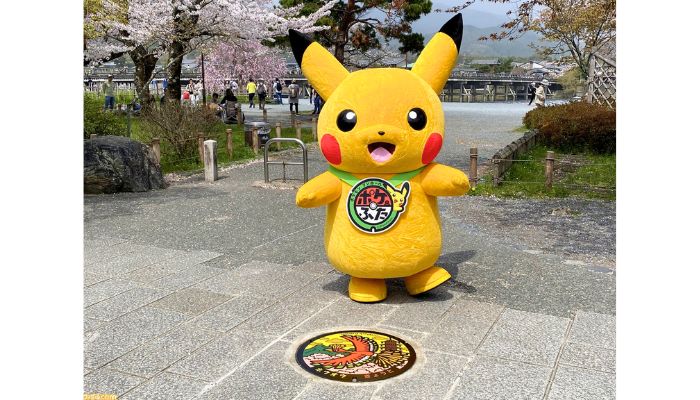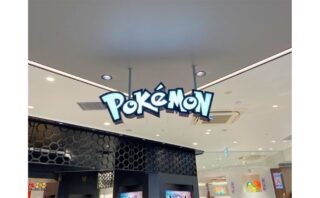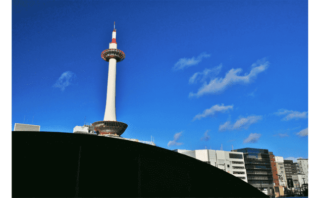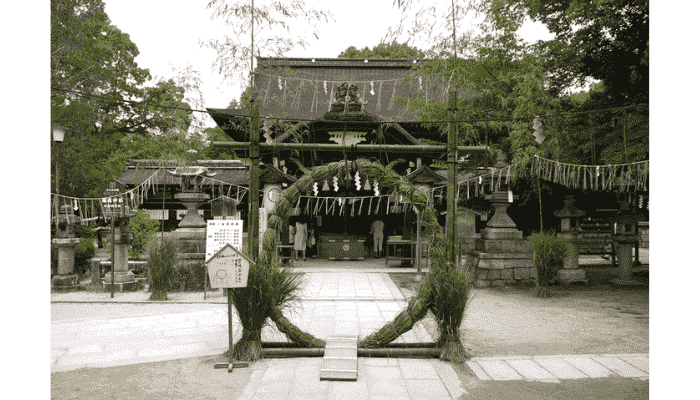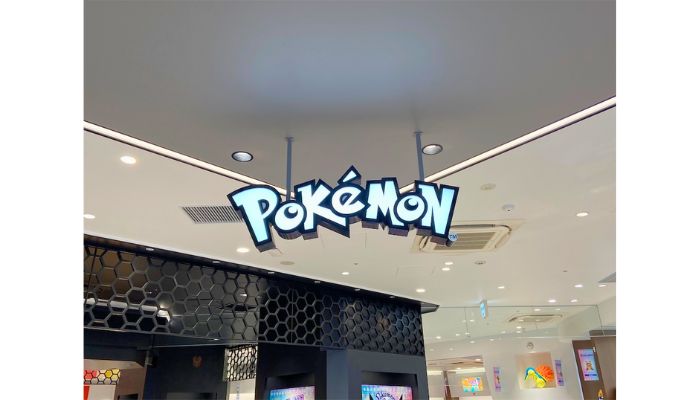Across Japan, you can find special manhole covers featuring unique Pokémon designs — these are called “Pokéfuta.”
It’s exciting to search for them, but there’s more to enjoy than just finding them. Each design often reflects something special about the local area, making it a fun way to discover new things about the place you’re visiting.
In this article, we’ll take a closer look at some of the Pokéfuta you can find in Kyoto.
Kyoto Now Has 8 Unique Pokéfuta
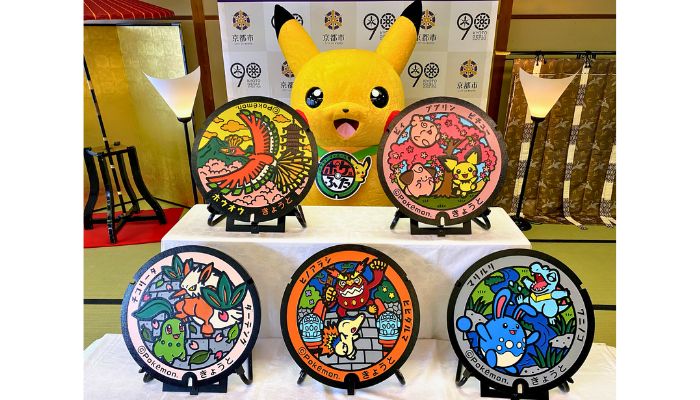
In 2021, five Pokéfuta (Pokémon-themed manhole covers) were installed at popular parks in Kyoto:
- Arashiyama Park
- Nishikyogoku Sports Park
- Umekoji Park
- Okazaki Park
- Maruyama Park
Then in 2024, three new Pokéfuta were added in Uji, bringing the total to eight.
In Kyoto, you can find Legendary Pokémon, the Johto starter Pokémon, and even Pokémon from the Paldea region. Each one is beautifully designed and connected to the charm of its location.
Introducing 5 Pokéfuta Locations in Kyoto City
Let’s take a closer look at the five Pokéfuta found in Kyoto City.
What kind of places are they located in?
Why were certain Pokémon chosen for each one?
What’s the connection between the design and the location?
We’ll explore the answers to these questions and discover the charm behind each Pokéfuta spot.
Arashiyama Park (Ho-Oh)
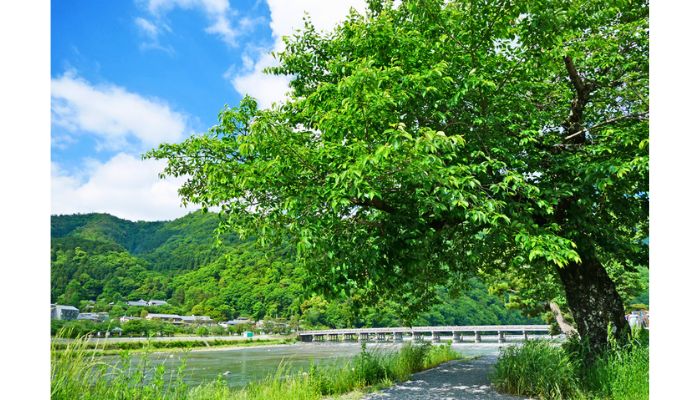
Arashiyama is one of Kyoto’s most popular sightseeing spots, famous for its bamboo grove and the scenic Togetsukyo Bridge. The area is beautiful year-round, especially during the cherry blossom season in spring and the colorful autumn leaves in fall.
The Pokéfuta here is located in the center of the Nakanoshima area of Arashiyama Park, about a 6-minute walk from Hankyu Arashiyama Station.

The Pokémon featured on this manhole cover is Ho-Oh, a Legendary Pokémon from the Johto region. It’s believed that the Johto region in the Pokémon world was inspired by Japan’s Kansai region — and Ecruteak City, in particular, is said to be modeled after Kyoto. That’s why Ho-Oh, which is closely connected to Ecruteak City, was chosen for this location.
The background of the design includes a building that looks like the Bell Tower from the Johto games, along with mountains and cherry blossoms that reflect Kyoto’s natural beauty.
Pokéfuta Location
616-8383 Kyoto-fu, Kyoto-shi, Ukyo-ku, Saga Nakanoshima-cho
Nishikyogoku Sports Park (Chikorita & Shiftry)
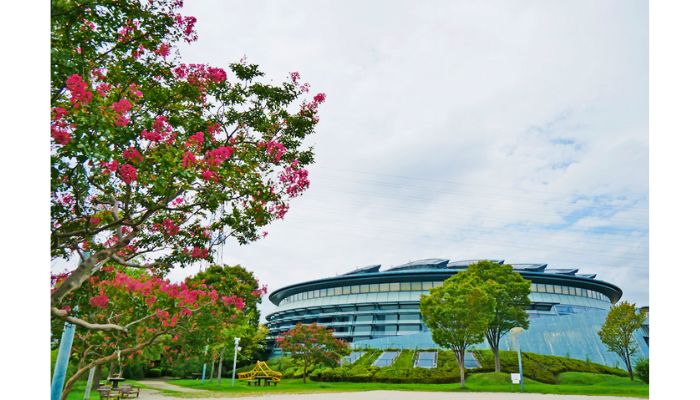
Nishikyogoku Sports Park is a large athletic complex in Kyoto City, with facilities like a track and field stadium, baseball field, and gymnasium. Interestingly, this area is known as the birthplace of the ekiden, a long-distance relay race in Japan.
The Pokéfuta here is located near Kataoka Arena Kyoto, about a 7-minute walk from Hankyu Nishikyogoku Station on the Kyoto Line.
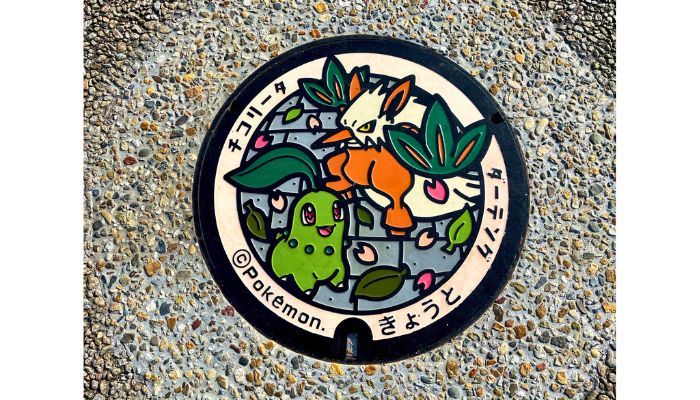
This manhole cover features two Grass-type Pokémon: Chikorita and Shiftry. Chikorita is one of the starter Pokémon from the Johto region, which is said to be inspired by the Kansai area — making it a fitting choice for Kyoto. The background shows the stone-paved path found inside the park, adding a local touch to the design.
Pokéfuta Location
615-0864 Kyoto-fu, Kyoto-shi, Ukyo-ku, Nishikyogoku Shinmei-cho
Umekoji Park (Totodile & Azumarill)
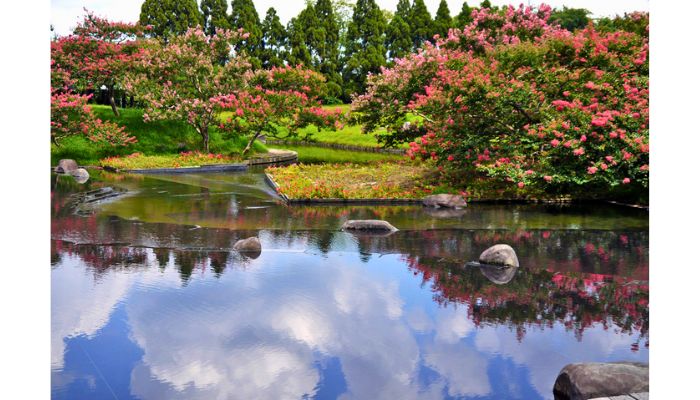
Umekoji Park is a large urban park in Kyoto, known for its open green lawns, beautiful Japanese garden, and seasonal natural beauty. It’s a popular destination for families and travelers, with the Kyoto Railway Museum and Kyoto Aquarium located right next door.
The Pokéfuta here is just a 1-minute walk from JR Umekoji-Kyotonishi Station.
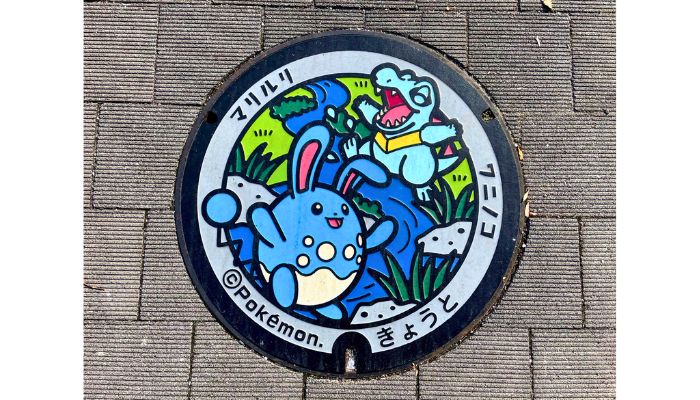
This manhole cover features the Water-type Pokémon Totodile and Azumarill. Totodile is one of the starter Pokémon from the Johto region, which is said to be inspired by the Kansai area — the same region Kyoto is in. That makes Totodile a perfect fit for this location.
The background shows a river-themed play area inside the park. Since Azumarill is known to live near water in the Pokémon world, it seems to have been chosen to match the setting.
Pokéfuta Location
600-8835 Kyoto-fu, Kyoto-shi, Shimogyo-ku, Kankiji-cho
Okazaki Park (Cyndaquil & Darmanitan)

Okazaki Park is a great place to enjoy both sightseeing and culture. It’s located near popular attractions like the Kyoto City Zoo and the National Museum of Modern Art, Kyoto. The park is also famous for cherry blossoms, making it a popular hanami (flower-viewing) spot in spring.
You can find the Pokéfuta in Okazaki Park near Heian Shrine. It’s about an 11-minute walk from Higashiyama Station on the Tozai Subway Line. If you’re taking the bus, get off at “Okazaki Park / ROHM Theatre Kyoto / Miyakomesse” and it’s just a 2-minute walk from there.
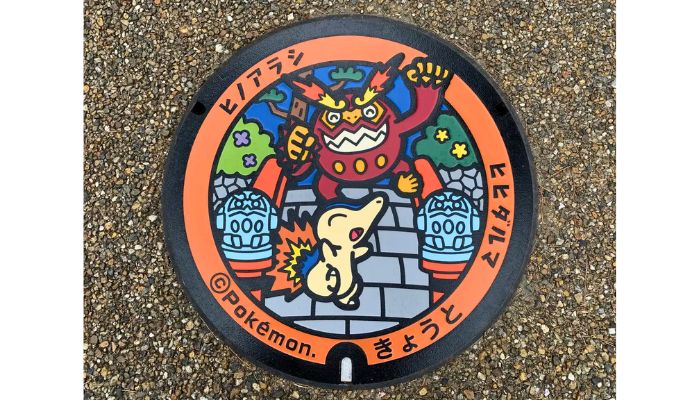
This Pokéfuta features the Fire-type Pokémon Cyndaquil and Darmanitan. Cyndaquil is one of the starter Pokémon from the Johto region, which is said to be inspired by the Kansai area—making it a great fit for Kyoto.
As for Darmanitan, it might have been chosen because Kyoto is home to a temple nicknamed “Daruma-dera” (Temple of Daruma), officially known as Hōrin-ji. The background of the manhole shows a stone-paved bridge, although no exact match for this design could be found near the park.
Pokéfuta Location
95 Okazaki Saishoji-cho, Sakyo-ku, Kyoto 606-8342
Maruyama Park (Cleffa, Igglybuff & Pichu)

Maruyama Park is a historic park in Kyoto’s Higashiyama district, well known for its beautiful cherry blossoms in spring. When Pokémon GO was first released in 2016, this park became a hotspot for players and was even called a “sacred place” for Pokémon fans.
The Pokéfuta in Maruyama Park is located near Gion Maruyama-dō (Gion Maruyamado Hall), close to the famous weeping cherry tree. It’s about a 13-minute walk from Gion-Shijo Station on the Keihan Line, or just a 6-minute walk if you take a bus and get off at Shijo Keihan-mae.
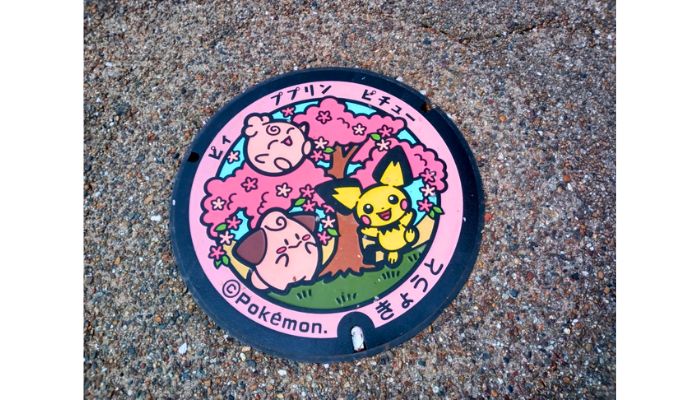
This Pokéfuta features three adorable baby Pokémon from the Johto region: Cleffa, Igglybuff, and Pichu. These Pokémon first appeared in Pokémon Gold and Silver. The background of the manhole cover shows cherry blossoms in full bloom, creating a cute and charming design that perfectly matches the peaceful atmosphere of the park.
Pokéfuta Location
Maruyama Park (in front of the famous weeping cherry tree)
Maruyama-cho, Higashiyama-ku, Kyoto 605-0073
New Pokéfuta in Uji City Added in 2024
Let’s take a look at two new Pokéfuta (Pokémon-themed manhole covers) that appeared in Uji City in June 2024, along with another newly announced design!
Uji Tea and History Park (Poltchageist & Sinistcha)
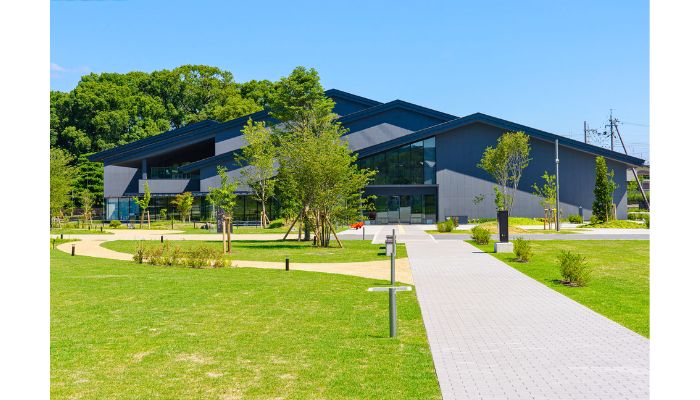
Uji Tea and History Park is a place where you can learn about the rich history and culture of Uji tea. Inside the park, there’s a facility called Chazuna, where you can try grinding tea leaves with a stone mill and whisk your own matcha.
The Pokéfuta here is located just a 1-minute walk from Keihan Uji Station or a 13-minute walk from JR Uji Station.
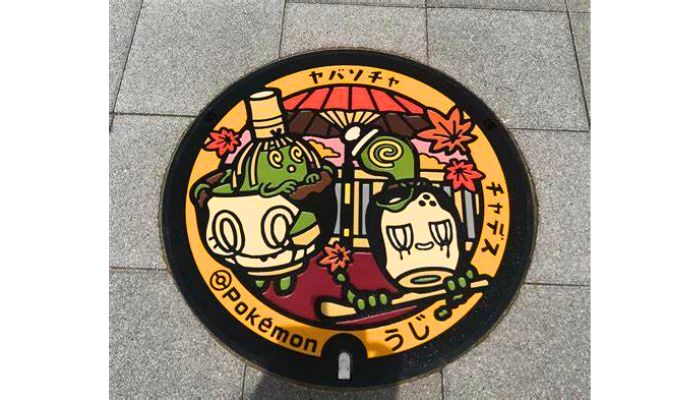
The featured Pokémon are Poltchageist and Sinistcha, ghostly tea-themed Pokémon from the Paldea region. Their connection to Uji—a city famous for tea—is perfect. The background includes traditional Japanese umbrellas and autumn leaves, giving the design a classic Kyoto-style atmosphere.
By the way, the Sinistcha on this manhole cover appears to be the Counterfeit Form, not the Authentic Form, because it lacks the signature stamp on the base of the cup.
Also, if you visit JR Uji Station, look for the teapot-shaped mailbox—it has a vibe that’s kind of like Sinistcha!
Pokéfuta Location
Uji Tea and History Park
203-1 Maruyama, Todo, Uji City, Kyoto 611-0013
Asagiri Bridge (Scorbunny & Spinda)
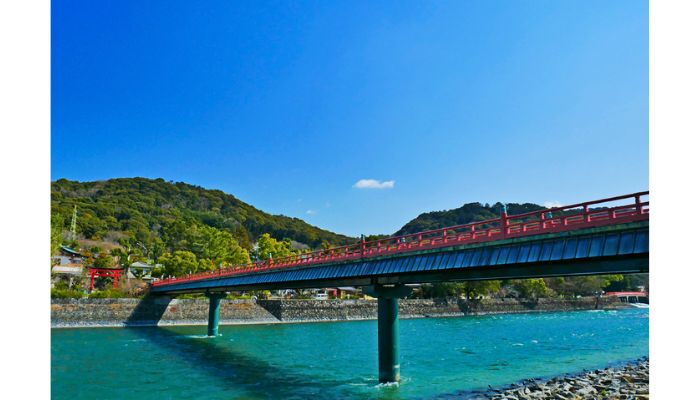
Another Pokéfuta in Uji can be found near Asagiri Bridge, which crosses the Uji River. It’s about a 15-minute walk from JR Uji Station or an 8-minute walk from Keihan Uji Station. If you’re coming from the Pokéfuta at Uji Tea and History Park (featuring Poltchageist and Sinistcha), it’s just a 9-minute walk.
To find this Pokéfuta easily, head toward the statues from The Tale of Genji near Asagiri Bridge.
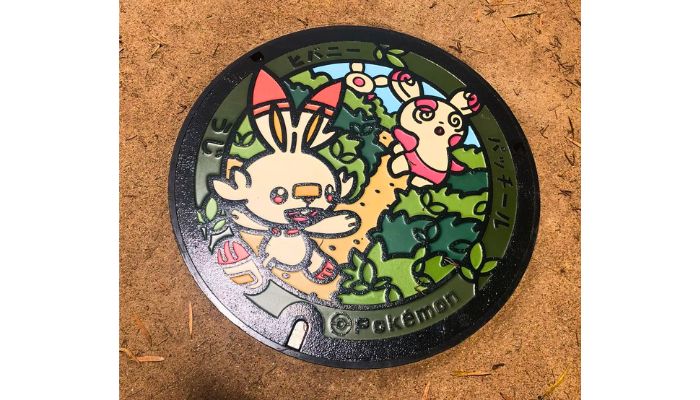
The featured Pokémon here are Scorbunny and Spinda. Long ago, Uji was written as “菟道,” which means “the path of the rabbit.” Because of this rabbit connection, Scorbunny—a rabbit Pokémon—was likely chosen for this location. Nearby, you’ll also find a statue of the “Mikaeri Usagi” (Looking-Back Rabbit) at Uji Shrine, adding to the theme.
Pokéfuta Location
Near Asagiri Bridge, Uji City, Kyoto
Prefectural Route 247, Uji, Kyoto 611-0021
A Third Pokéfuta Coming to Uji at the Nintendo Museum!
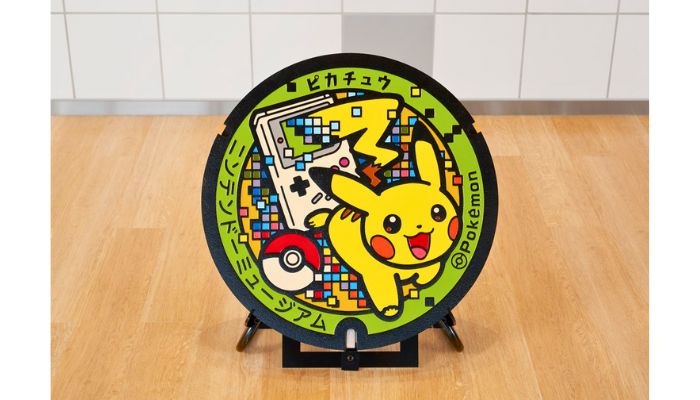
A third Pokéfuta is coming to Uji City! It will be located inside the Nintendo Museum, which is set to open on October 2, 2024.
This special Pokéfuta features Pikachu and a Poké Ball, designed to look like they popped out of a classic Game Boy screen. The pixel-style background gives it a nostalgic, retro feel—perfect for celebrating the history of Pokémon.
Please note that this Pokéfuta is located inside the Nintendo Museum, so you’ll need a ticket to enter the facility in order to see it.
Kyoto Pokéfuta Map and How to Visit Them
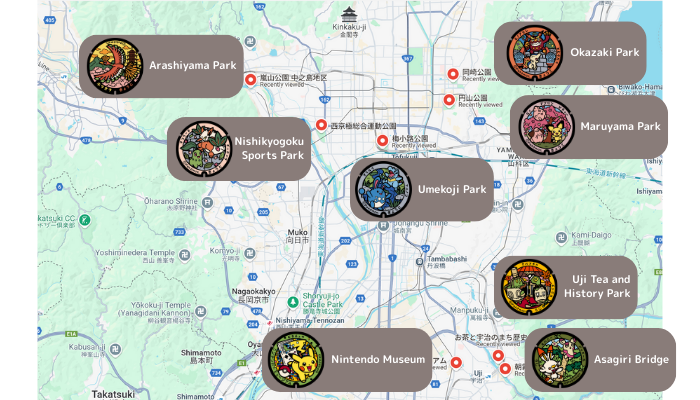
Most of the Pokéfuta in Kyoto are located in Kyoto City and Uji City. However, the five Pokéfuta in Kyoto City are spread out, making it a bit tricky to visit all of them in one day.
If you’re traveling by car, you might be able to visit them all in about 3 to 4 hours. But if you’re using public transportation like trains and buses, we recommend taking a 2-day trip to enjoy the journey at a relaxed pace.
Recommended 2-Day Kyoto Pokéfuta Route
Starting from Kyoto Station / Travel by train and bus
Day 1
- Nishikyogoku Sports Park (Chikorita & Shiftry)
- Arashiyama Park (Ho-oh)
Take some time to explore the scenic Arashiyama area. - Okazaki Park (Cyndaquil & Darmanitan)
- Maruyama Park (Cleffa, Igglybuff & Pichu)
Visit nearby spots like Gion.
→ Stay overnight near Shijo or Kyoto Station
Day 2
- Umekoji Park (Totodile & Azumarill)
- Uji City Historical Park of Tea and Culture (Poltchageist & Sinistcha)
- Asagiri Bridge (Scorbunny & Spinda)
Enjoy sightseeing in Uji.
Of course, you can change the route based on where you’re staying or which places you want to visit. Feel free to use this plan as a reference!
Don’t Miss the Pokémon Center Kyoto During Your Pokéfuta Adventure!

While exploring Pokéfuta around Kyoto, make sure to stop by Pokémon Center Kyoto, located just steps from Shijo Subway Station.
Inside, you’ll find Kyoto-exclusive items and decorations, including a Pikachu wearing a kimono and statues of Ho-oh and Lugia—things you won’t easily see at other Pokémon Centers. It’s a fun spot for both collectors and casual fans alike.
The store is popular with international visitors and is always lively. If you’re doing a Pokéfuta tour or sightseeing around Kyoto, it’s definitely worth a visit!
Pokémon Center Kyoto
- Address: SUINA Muromachi 2F, 78 Kankoboko-cho, Shimogyo-ku, Kyoto City, Kyoto 600-8009
- Map: GoogleMap
- Hours: 10:00 AM – 8:00 PM
- Open every day
- Phone: 075-353-0250
- Website: https://www.pokemon.co.jp/
This wraps up our guide to Pokéfuta in Kyoto!
We hope your Pokéfuta journey helps you discover even more about the charm of each town you visit.
▼ Related Articles for Kyoto Sightseeing
